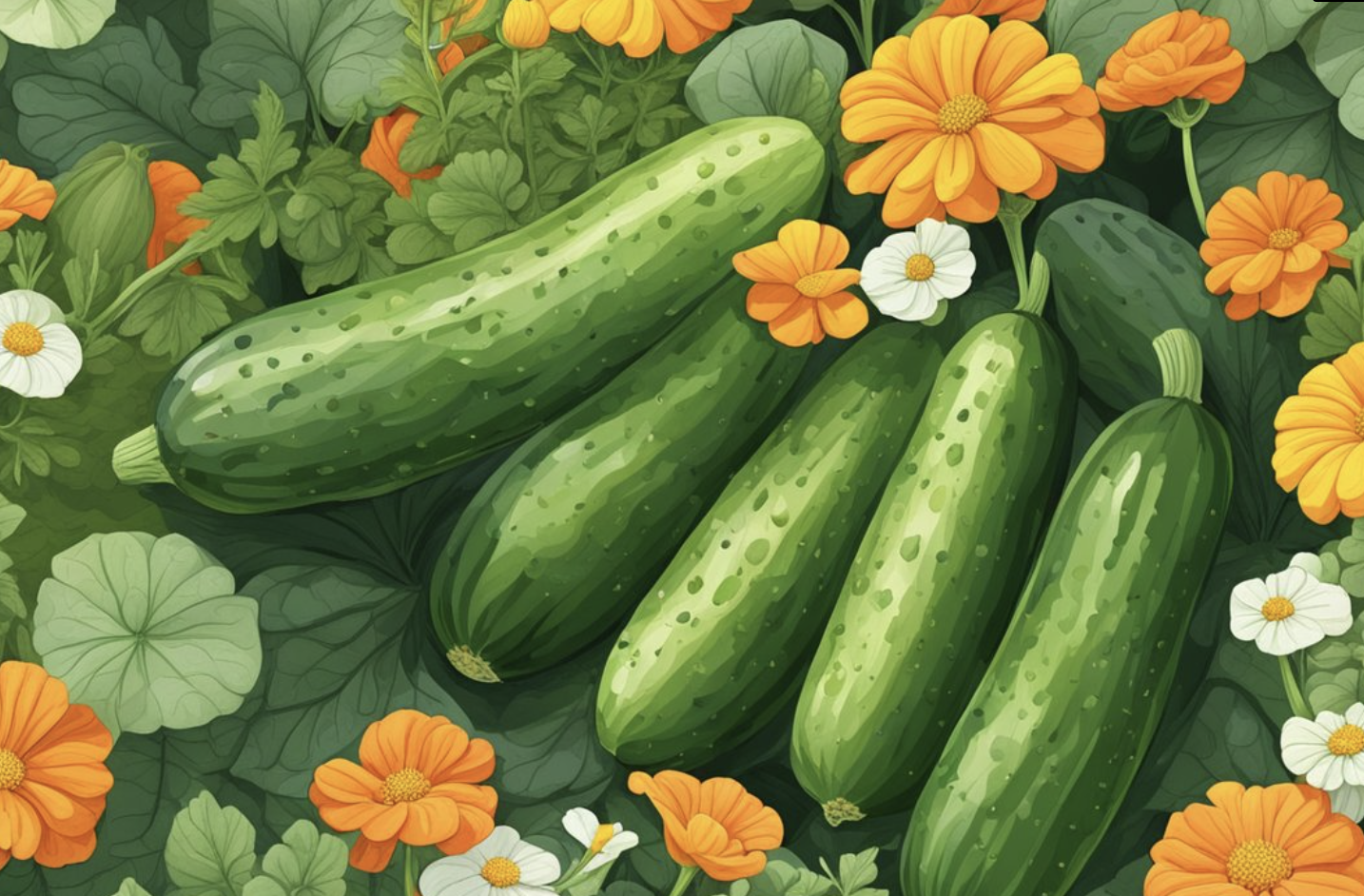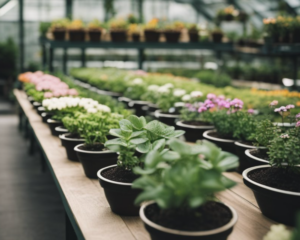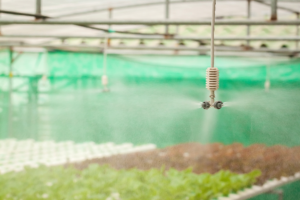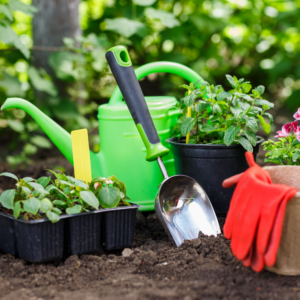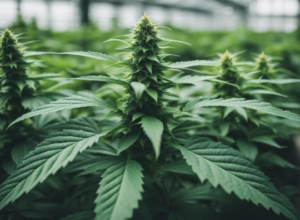I’ve always loved growing cucumbers in my garden, but I’ve noticed that they can be susceptible to pests and diseases. That’s why I started exploring the world of companion planting. By planting certain plants alongside my cucumbers, I’ve found that they not only thrive, but also help to repel pests and attract beneficial insects. In this article, I’ll share some of my favorite companion plants for cucumbers.
One of the best companion plants for cucumbers is marigolds. These bright, cheerful flowers not only add a pop of color to your garden, but also help to repel pests like aphids and cucumber beetles. Plus, they attract beneficial insects like ladybugs and lacewings, which can help to keep your garden pest-free.
Another great companion plant for cucumbers is dill. This herb not only adds a delicious flavor to your cucumbers, but also attracts beneficial insects like hoverflies and wasps. Plus, it can help to repel pests like spider mites and aphids. So if you’re looking to boost your cucumber crop this year, consider planting some marigolds and dill alongside them.
Benefits of Companion Planting
Companion planting is the practice of growing different plants together to achieve various benefits. As a cucumber grower, I have found that planting certain companion plants alongside my cucumbers has helped me achieve better yields and healthier plants. Here are some of the benefits of companion planting:
Improved Soil Quality
Integrating companion planting into your garden can significantly enhance soil quality by adding essential nutrients and organic matter. For example, planting legumes like beans or peas alongside cucumbers fixes nitrogen in the soil, which is crucial for plant growth. Additionally, deep-rooted plants like comfrey help break up compacted soil and improve drainage.
Natural Pest Control
You can naturally control pests through companion planting. For instance, marigolds planted near cucumbers repel nematodes and aphids, while herbs like basil, thyme, and oregano deter pests such as whiteflies and spider mites.
Disease Prevention
Preventing the spread of diseases is another benefit. Planting onions or garlic alongside cucumbers can ward off fungal diseases like powdery mildew. Strong-scented plants like lavender or rosemary can mask the scent of cucumbers, making them less attractive to pests and reducing disease susceptibility.
Pollinators
Attracting essential pollinators like bees and butterflies is made easy by companion planting. Flowers such as zinnias, sunflowers, or cosmos planted alongside cucumbers draw pollinators to your garden, boosting cucumber production.
Nutrients
Improving soil nutrient content is another advantage. Plants like dill, fennel, or cilantro attract beneficial insects like ladybugs and lacewings, which help control pests and enhance soil fertility.
Attract Beneficial Insects
Drawing beneficial insects such as bees, butterflies, and ladybugs can significantly aid in pest control and pollination. For instance, plants like yarrow, dill, or fennel near cucumbers attract these helpful insects.
Best Companion Plants for Cucumbers
As a gardener, maximizing plant productivity while minimizing pesticide and fertilizer use is essential. Companion planting, which involves growing different crops together for mutual benefits, can achieve this. Here are the best companion plants for cucumbers to enhance their growth and yield:
Legumes
Beans and peas are excellent companions for cucumbers. They fix nitrogen from the air, improving soil quality and providing cucumbers with essential nutrients for healthy growth.
Flowering Plants
Nasturtiums, marigolds, and sunflowers attract beneficial insects like pollinators and bees, boosting cucumber flower pollination and yield. These plants also repel pests and deter harmful insects.
Aromatic Herbs
Herbs like dill, basil, oregano, and sage are great for cucumbers. Their strong scents mask cucumber smells, making it hard for pests to locate them while attracting beneficial insects like ladybugs to control aphids. Here are some of the best aromatic herbs to plant alongside cucumbers:
- Dill: Attracts beneficial insects like ladybugs and lacewings, which can help control aphids and other pests. Its strong scent also helps mask the scent of cucumbers, making it harder for pests to find them.
- Basil: Repels pests such as whiteflies and spider mites. Its aromatic leaves not only add flavor to dishes but also provide a natural defense for cucumbers.
- Oregano: Helps deter pests with its strong scent and attracts beneficial insects. It can be used to enhance the flavor of many culinary dishes while providing protection for your cucumbers.
- Sage: Repels cabbage moths and beetles, which can be harmful to cucumbers. Its robust aroma helps keep your garden pest-free, while the leaves can be used for seasoning.

As a gardener, I have found that companion plants for cucumbers can be incredibly beneficial. Here are some ways that they can help:
Improving Soil Conditions
Companion plants such as legumes can fix nitrogen into the soil, which is an essential nutrient for cucumber growth. Additionally, plants like marigolds can help repel pests and improve soil health by acting as a natural mulch.
Pest and Disease Management
Companion plants can also help manage pests and diseases. For example, planting dill alongside cucumbers can attract beneficial insects like ladybugs and lacewings that will eat aphids. Similarly, planting radishes nearby can act as a trap crop for cucumber beetles, which will preferentially eat the radishes instead of the cucumbers.
Enhancing Growth and Flavor
Finally, some companion plants can enhance the growth and flavor of cucumbers. For instance, planting beans alongside cucumbers can help support their growth habits, while planting herbs like basil can improve the flavor of the cucumbers.
Overall, I have found that planting companion plants for cucumbers can be a simple and effective way to improve the health and yield of my cucumber plants.
Companions to Avoid Near Cucumbers
When it comes to companion planting for cucumbers, there are certain plants that should be avoided. These plants can compete for resources, attract pests, or even stunt the growth of your cucumbers. Here are some companions to avoid near cucumbers:
- Potatoes: Potatoes and cucumbers are both members of the nightshade family. Planting them together can increase the risk of disease and pests, such as potato beetles, that can harm both crops.
- Aromatic herbs: While some herbs like dill and chamomile can be beneficial to cucumbers, others like sage and rosemary can repel pollinators and other beneficial insects. It’s best to avoid planting these near your cucumbers.
- Melons: Melons and cucumbers are both vining plants that can compete for space and resources. Additionally, they are both susceptible to the same diseases and pests, such as powdery mildew and cucumber beetles.
- Zucchini: Zucchini and cucumbers are also vining plants that can compete for resources. Planting them together can lead to overcrowding and reduced yields.
- Pumpkin: Like melons and zucchini, pumpkins and cucumbers are both vining plants that can compete for space and resources. Additionally, they are both susceptible to the same diseases and pests.
By avoiding these companion plants near your cucumbers, you can help ensure a healthy and productive harvest.
Planning Your Cucumber Garden
Spacing and Layout
When planting cucumbers, it’s important to consider the amount of space they will need to grow. Cucumbers have a sprawling growth habit and can take up a lot of room in the garden. To maximize space, consider planting cucumbers on a trellis. This will allow the plants to grow vertically and take up less space. When planting on a trellis, space the plants about 12 inches apart.
If you’re planting cucumbers in rows, space them about 36 inches apart to give them plenty of room to grow. Be sure to leave enough space between rows to allow for easy access and maintenance.
Water and Sunlight Requirements
Cucumbers require plenty of water and sunlight to grow and thrive. Be sure to plant them in an area that receives at least 6 hours of direct sunlight each day. Cucumbers also need consistent moisture to prevent them from becoming bitter. Water them deeply once a week, or more often if the weather is hot and dry.
Soil pH and Nutrition
Cucumbers prefer a slightly acidic soil with a pH between 6.0 and 6.8. Test your soil before planting and adjust the pH as necessary. Cucumbers also require plenty of nutrients to grow and produce fruit. Work plenty of compost or well-rotted manure into the soil before planting to provide the plants with the nutrients they need.
When companion planting with cucumbers, choose plants that have similar soil and water requirements. Avoid planting with plants that have deep root systems that may compete with the cucumbers for water and nutrients.
By planning your cucumber garden carefully, you can ensure that your plants have the space, water, and nutrients they need to thrive and produce a bountiful harvest.
Maintenance and Care for Companion Planting
When it comes to companion planting, it’s important to take care of all the plants involved in the process. Here are some tips for maintaining and caring for your companion plants:
Water
Make sure all your plants receive enough water, especially during hot summer months. Companion plants can help retain moisture in the soil, but it’s still important to water regularly.
Fertilizer
Companion plants can also help with nutrient uptake in the soil, but it’s still important to fertilize your plants as needed. Use a balanced fertilizer and follow the instructions on the package.
Pest Control
Companion plants can help repel pests, but it’s still important to monitor your plants for any signs of infestation. If you do notice pests, try using natural methods like handpicking or spraying with a mixture of water and soap.
Disease Management
Companion plants can also help prevent the spread of disease, but it’s still important to keep a close eye on your plants. Remove any diseased leaves or plants as soon as possible to prevent the spread of disease.
Trellis
If you’re growing cucumbers, it’s important to provide them with a trellis to climb. This not only helps with space management, but also improves air circulation and reduces the risk of disease.
Mulch
Finally, consider using mulch around your plants to help retain moisture and suppress weeds. This can also help regulate soil temperature and improve overall plant health.
By following these tips, you can ensure that your companion plants thrive and provide the best possible growing environment for your cucumbers.
Harvesting and Post-Harvest Tips
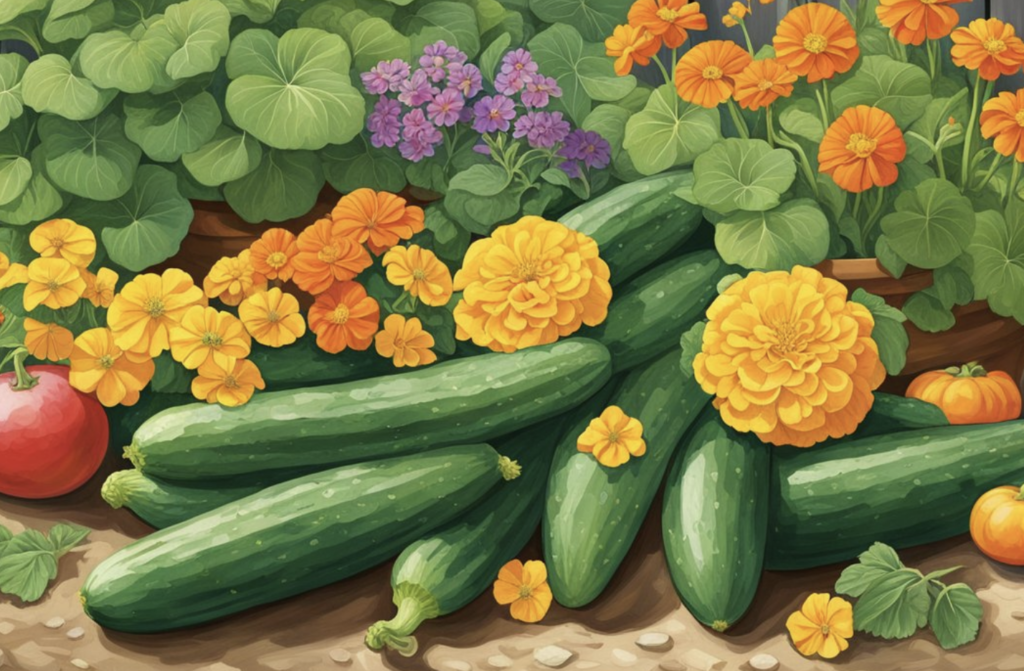
Harvesting cucumbers is a satisfying experience, and it’s important to do it at the right time to ensure the best taste and texture. I usually wait until the cucumbers are around 6-8 inches long and have a firm texture. It’s important to harvest them before they become too big and start to turn yellow, as this can negatively affect the flavor.
When harvesting cucumbers, be sure to use a sharp pair of scissors or pruning shears to cut the stem at the base of the fruit. Pulling them off the vine can damage the plant and reduce the yield of future crops.
After harvesting, it’s important to store cucumbers properly to maintain their freshness. I recommend keeping them in the refrigerator in a plastic bag or container with a damp paper towel to help retain moisture.
If you’re interested in pickling cucumbers, it’s best to harvest them when they’re around 2-4 inches long. This size is ideal for pickling and will result in a crisp and flavorful pickle.
When it comes to companion plants for cucumbers, there are a few post-harvest tips to keep in mind. If you’re growing cucumbers alongside tomatoes, be sure to store them separately after harvesting. Tomatoes release a gas that can cause cucumbers to ripen and spoil more quickly.
If you started your cucumbers from transplants, be sure to give them time to establish themselves before harvesting. The first few fruits that appear on the plant may not be as flavorful or firm as later fruits, so it’s best to wait until the plant has produced several fruits before harvesting.
By following these simple harvesting and post-harvest tips, you can ensure that your cucumbers are flavorful and fresh, whether you’re eating them fresh or pickling them for later use.
Conclusion
I hope this article has been helpful in identifying some great companion plants for cucumbers. Remember, planting these companions can help improve the health and yield of your cucumber plants, while also deterring pests and attracting beneficial insects.
One thing to keep in mind is that every garden is different, and what works for one person may not work for another. It’s important to experiment and find what works best for your specific garden and climate.
Don’t be afraid to try different combinations of companion plants and see what works best for you. And always remember to practice good gardening practices, such as crop rotation, to keep your garden healthy and thriving.
Happy gardening!

